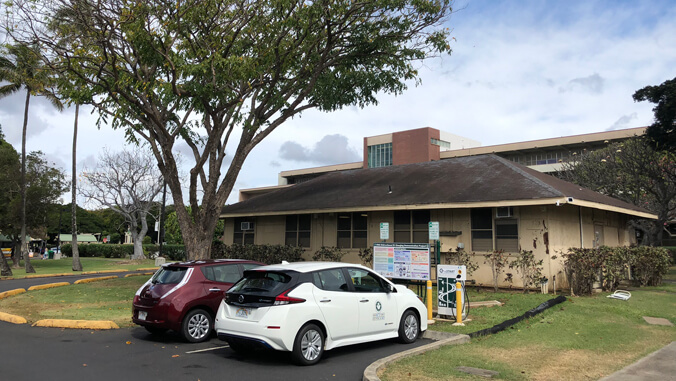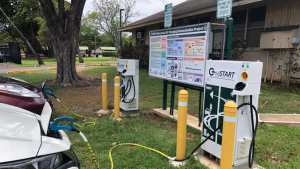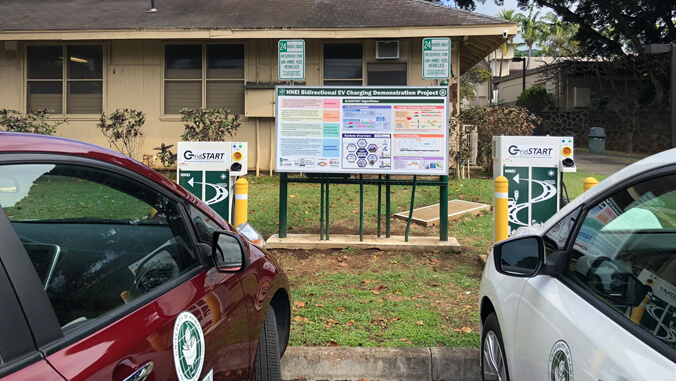
The University of Hawaiʻi at Mānoa, through its Hawaiʻi Natural Energy Institute (HNEI), is introducing a new technology development and demonstration program aimed at reducing the cost of operating electric vehicles (EVs) and on-campus electricity expenses. The program offers bidirectional EV charging, allowing electricity to flow both ways between the EVs and the power grid via on-campus charging stations.

By signing up for this program and completing the necessary training, qualified UH Mānoa personnel will have access to two EVs conveniently located on campus.
The program supports UH Mānoa’s efforts to achieve net-zero energy by 2035 and to replace its gas-powered vehicles with EVs. The optimization algorithm developed in-house by HNEI determines the most economical times to charge and discharge the EVs, taking into account fluctuating electricity costs, on-campus PV production, and campus power demand throughout the day. By charging the EVs when electricity is cheapest and using the EV battery power during peak times, the system saves money on energy costs.
“The more people sign up, and the more people use it, the richer the data set will be for us to really evaluate, and then further tune our algorithms to extract more value out of the system… [and] by using bidirectional charging, we have the opportunity to actually drive down the cost of operating vehicles for purposes of this campus,” said Leon Roose, HNEI specialist.
Overall, this program is helping UH Mānoa become more sustainable and reduce its carbon footprint. Potential EV drivers are required to review a user manual (or participate in optional in-person training) and sign a consent form to participate in the program.
Any potential EV drivers can contact Ai Oyama at aioyama@hawaii.edu.


